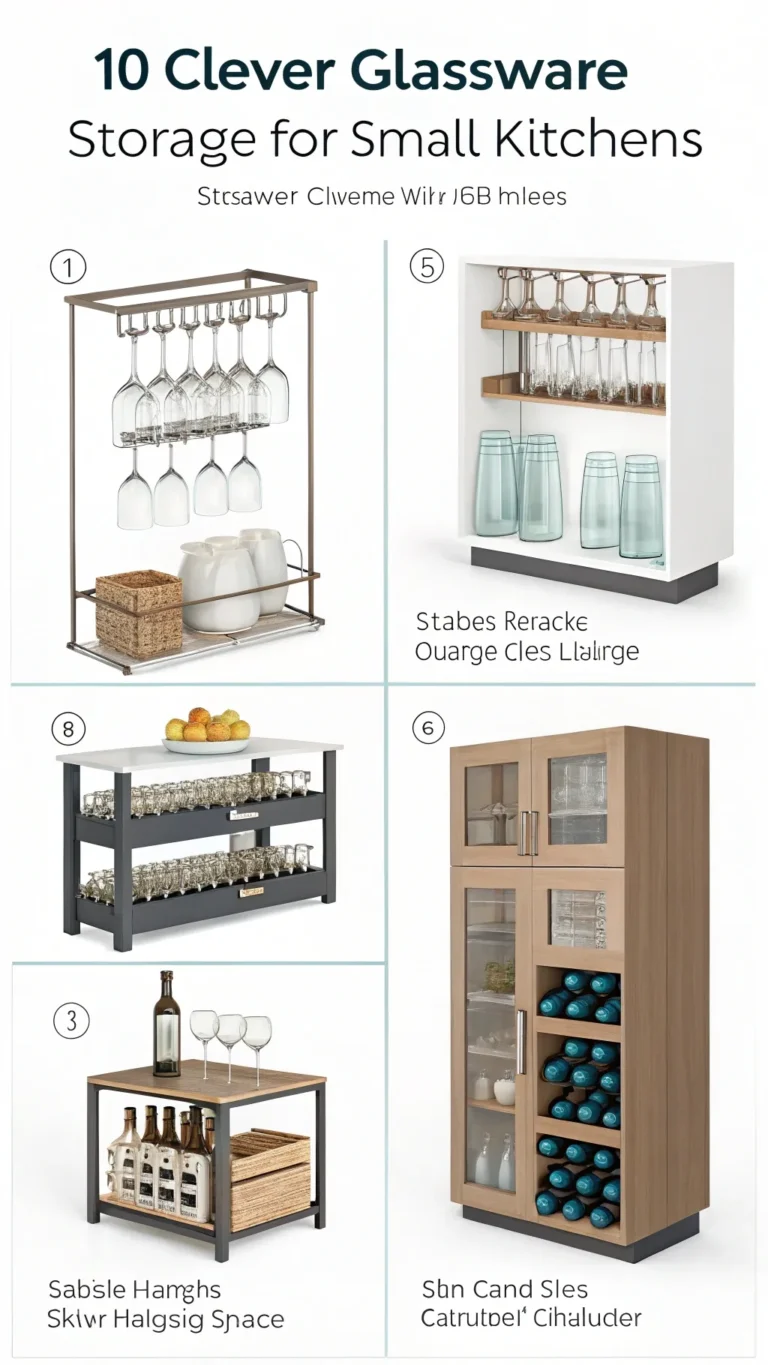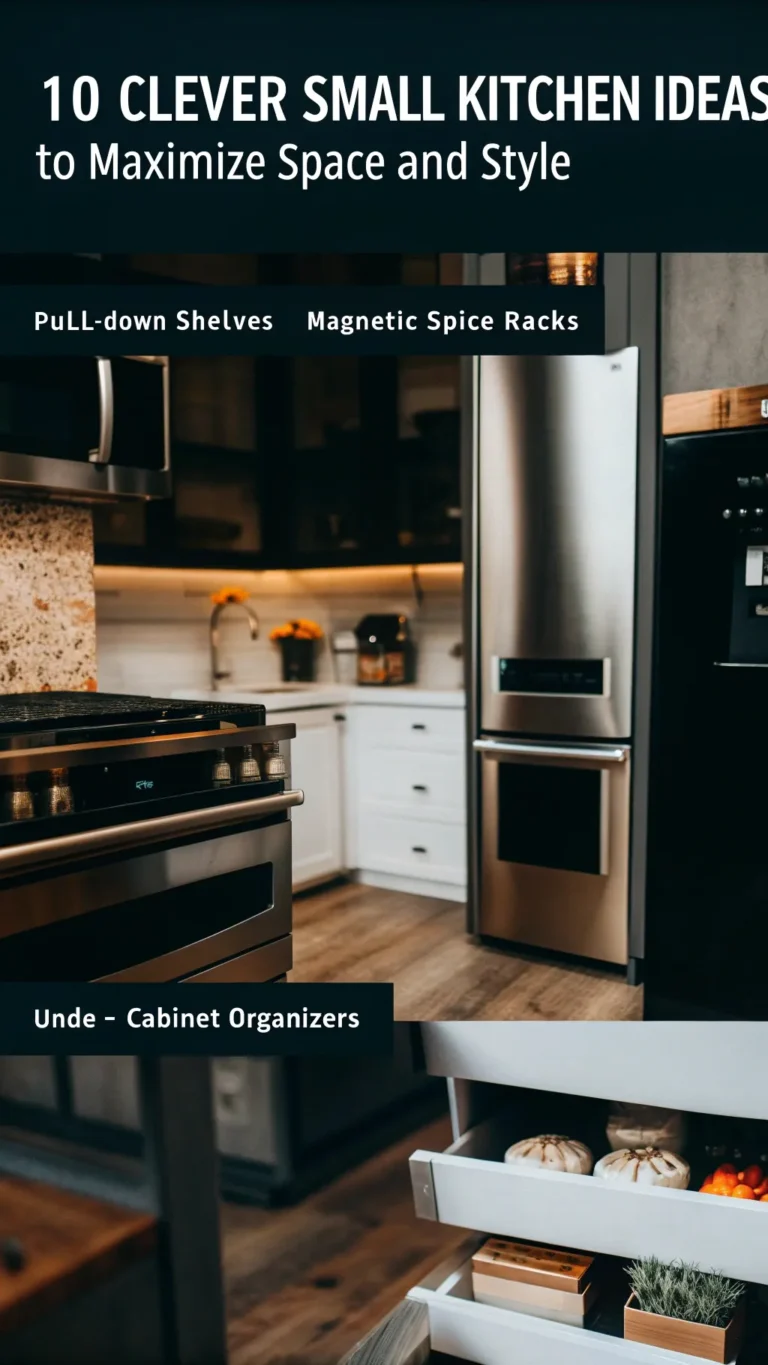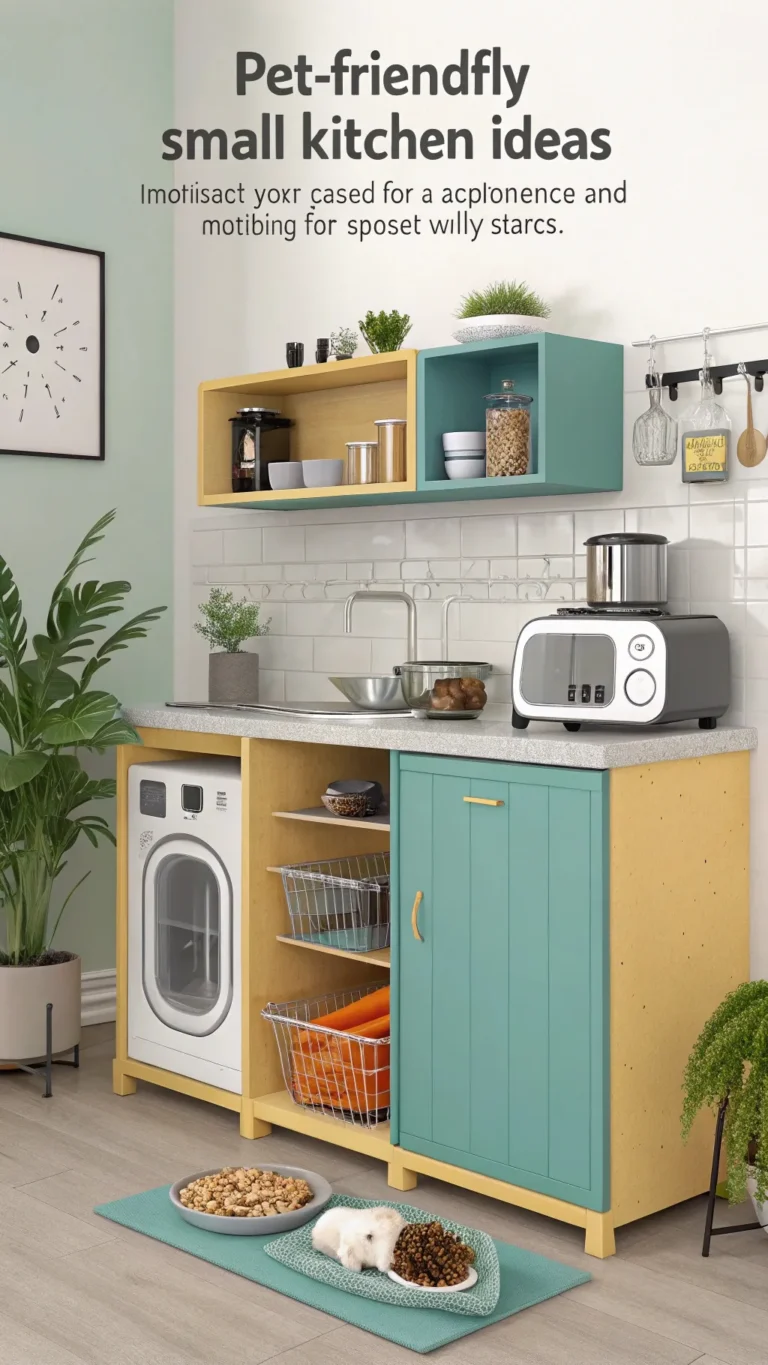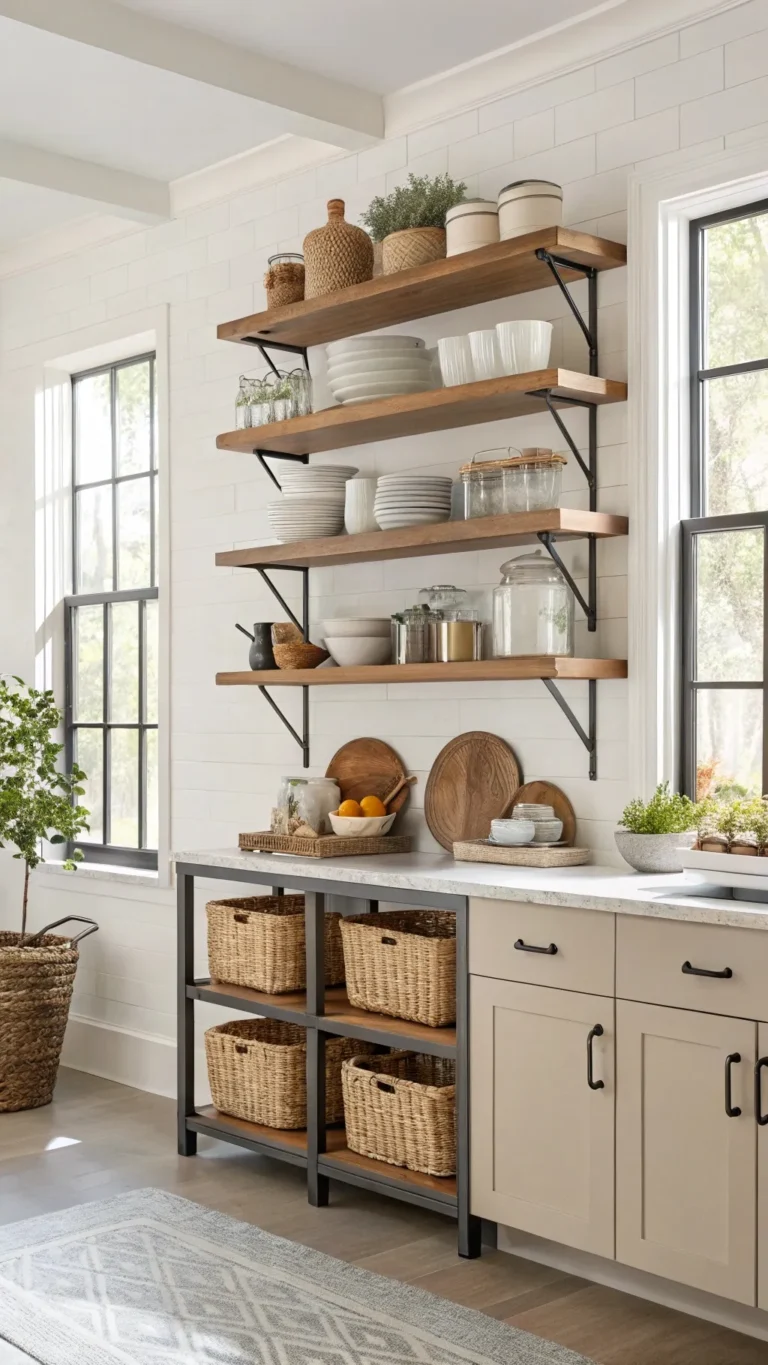Small kitchens can feel cramped and dull. They often lack a warm, lively touch. Plants bring color, freshness, and a cozy vibe to these tight spaces. You can add greenery small kitchen easily, with clever ideas that work in even the tiniest area.
This guide shares 10 practical ways to include plants in your kitchen. From wall gardens to hanging pots, each idea suits small spaces and different light levels. Plus, you will learn the best kitchen plants for small spaces and care tips tailored to kitchen environments.
Let’s make your kitchen a green, cheerful corner of your home.
Why Greenery is Essential for Small Kitchens
Plants do more than decorate. They enhance your kitchen’s mood and health.
Cleaner Air
Certain plants act as natural air filters. According to a 2024 study by NASA, plants like spider plants and snake plants remove toxins common in kitchens, such as formaldehyde and benzene. Cleaner air feels fresher and healthier.
Stress Relief and Mood Lift
Experts say being near plants can lower stress and boost happiness. Dr. Kimberly Urban, a psychologist, notes, “Plants improve mental wellness by connecting us with nature.” This benefit fits the 2025 trend of biophilic design, blending natural elements inside homes.
Adding Color and Texture
Small kitchens often have plain walls and hard surfaces. Plants add rich greens and interesting shapes that break up these monotones. They bring warmth and life without clutter.
Functional Beauty: Fresh Herbs
Growing herbs like basil, mint, or parsley lets you snip fresh flavors during cooking. It saves trips outside and fits perfectly in a small kitchen.
Solving the Small-Space Problem
Smart plant placement can make your kitchen appear bigger. Vertical arrangements draw eyes upward, opening the room. Light-reflecting leaves bounce light around. Plants soften harsh kitchen lines, making the space more inviting.
Consider why you want plants: for air quality, tasty herbs, or decoration. This helps you pick the right styles and spots.
Vertical & Wall Solutions: Maximizing Upward Space
“Go vertical” is the best advice for cramped kitchens. Walls offer free space to add greenery without eating up counters.
1. Wall-Mounted Planters
Small pots hung on walls add charm without floor crowding. Choose geometric or colorful containers for style with function.
Place these near windows or unused wall areas. Keep pots light and secure with strong hooks. Self-watering planters reduce daily care and prevent spills.
Example: Picture several little pots in a neat cluster decorating a kitchen wall.
2. Vertical Herb Gardens
A vertical herb garden saves space and adds flavor. Use pallets, tiered boxes, or pocket organizers fixed to walls.
Basil, mint, and chives grow well with enough sunlight. Group herbs needing similar water amounts for easy care.
Expert Tip: Farmer and herb specialist Jill Stevens advises, “Mix herbs wisely to keep plants thriving longer.”
Visual: A lush vertical green garden, bursting with herbs in your kitchen.
3. Shelving Units as Plant Displays
Open shelves or ladder-style units serve double duty. Combine plants with cookbooks or cute kitchen gadgets. This makes plants part of your kitchen personality.
Arrange pots to allow growth and easy access. Use drip trays to protect shelves.
This method adds a vertical garden kitchen feel and fits many small kitchen plant ideas.
Countertop & Shelf Solutions: Utilizing Existing Surfaces
Countertops and shelves offer simple, flexible places to place plants. But don’t let them crowd these functional spots.
4. Mini Countertop Clusters
Group tiny plants like succulents, ZZ plants, or baby pothos in small pots on trays or risers. This keeps counters tidy and stylish.
Choose plants that tolerate kitchen steam or occasional splashes.
Keep clusters on corners or less-used areas to protect prep space.
Visual: A neat, green group of tiny pots on a kitchen counter.
5. Windowsill Wonders
Windowsills are perfect for sunlight-loving plants. Herbs, cacti, and succulents thrive here.
Remember to check for drafts or moisture damage from condensation. Pots with drainage are a must. Turn plants regularly for even growth.
Measure your windowsill depth to fit pots nicely.
6. Appliance-Top Accents
Use tops of appliances like the fridge for trailing plants such as spider plants or pothos.
These plants hang softly, adding life without taking counter space.
Secure pots with liners or mats to avoid scratches. Avoid heat vents or hot surfaces.
Example: A trailing pothos hanging beautifully from the fridge top.
This idea fits low light kitchen plants needs as these spots often have less sun.
Hanging & Nook Solutions: Finding Unexpected Spots
Look beyond the obvious points. Ceilings, corners, and nooks often hold hidden opportunities.
7. Hanging Baskets & Planters
Hang pots from ceilings, curtain rods, or under cabinets with hooks. Trailing plants like string of pearls or spider plants work well.
Use reliable ceiling hooks suitable for your kitchen’s material. Water with care, using long-spout watering cans.
Visual: Plants hanging at varying heights near a bright window.
8. Suspended Shelf Systems
Rope or chain-hung shelves create green focal points mid-air. This adds dimension without bulky furniture.
Make sure ceiling fittings can hold weight safely. Spread plants evenly to balance.
9. Floor Plants in Corners
Even small kitchens have tiny unused corners. Add tall, slim plants like snake plants or ZZ plants here.
Use small stands if needed to lift plants for better air circulation.
Pick plants proportional to the space to avoid crowding.
Example: An elegant snake plant stands tall in a narrow corner.
10. Magnetic Planters on the Fridge
Strong magnetic pots add greenery right on your fridge door. Perfect for small succulents or air plants.
Make sure magnets hold well to avoid falls. Keep plants light and small.
This idea shines as a unique small kitchen plant idea perfect for tight space.
Choosing the Right Plants & Care Tips for Kitchens
Not all plants thrive in a kitchen’s varying conditions. Let’s pick smart.
Factors to Consider
- Light: Identify bright, shady, or low light spots.
- Humidity: Kitchens often have moist air – good for ferns, less for succulents.
- Heat: Keep plants away from oven heat or hot vents.
- Space: Allow room for growth without crowding.
- Maintenance: Beginners should choose easy-care plants.
Best Kitchen Plants List
- Pothos: Tolerates low light, trailing beauty.
- Spider Plant: Easy, air purifier.
- Snake Plant: Vertical, low light friendly.
- ZZ Plant: Survives very low light, drought resistant.
- Peace Lily: Low light, dramatic flowers when thirsty.
- Herbs: Basil, mint, parsley — need sun, culinary use.
- Succulents/Cacti: Require light, low water.
- Air Plants: Soil-free, versatile placement.
Basic Care Tips
- Water only when soil dries. Avoid overwatering.
- Rotate plants for even light exposure.
- Clean leaves from dust and kitchen grease.
- Protect from splashes and intense heat.
Start small with one or two plants. Experiment as you learn.
Visual: An infographic showing light and water needs of top kitchen plants.
Styling Your Greenery: Integrating Plants into Small Kitchen Decor
Plants can be decor stars when styled thoughtfully.
Choosing Pots and Planters
Select materials like ceramic, terracotta, or metal. Match color tones with or contrast your kitchen style.
Size pots to plant needs. Avoid huge pots that overwhelm small spaces.
Ensure drainage holes to prevent root rot.
Grouping and Arrangement
Group plants in threes or odd numbers for visual appeal. Vary heights and textures.
Create a focal point on a shelf or counter corner.
Blending With Decor
Plants complement colors and materials already present. Wood, stone, and metal surfaces look lively with greenery.
Mix pot styles subtly with a unifying theme, such as a common color.
Use risers or stands to add vertical interest.
Visual: Photos showing minimalist, bohemian, and colorful kitchen plant arrangements.
FAQs
What are the best kitchen plants for small spaces with low light?
Try ZZ Plant, Snake Plant, Pothos, and Cast Iron Plant. Experts say they tolerate shade and are tough.
How to add greenery if I have zero counter space?
Focus on vertical wall pots, hanging baskets, and magnetic planters.
Can I grow herbs in a small kitchen?
Yes! Most herbs need sunlight and regular watering. Try Basil, Mint, Parsley.
Will plants survive greasy or steamy kitchens?
Choose hardy plants like Pothos or Ferns. Wipe leaves clean regularly. Avoid stove proximity.
How to hang plants in a rental kitchen safely?
Use tension rods, over-the-cabinet hooks, or landlord-approved anchors.
Final Thoughts
Adding plants to your small kitchen lifts mood and style. Vertical, hanging, and surface options fit any space. Correct plant choices and care keep your greens thriving.
A few pots can bring fresh herbs to your meals and clean your air. Starting small delivers big joy.
Share your ideas and photos! Explore other green living tips linked here. Your kitchen can become a cozy, lively heart of your home with just a little greenery.
Meta Title: 10 Creative Ways to Add Greenery to Your Small Kitchen
Meta Description: Transform your small kitchen! Discover 10 clever ways to add greenery, from vertical gardens to hanging plants. Find the best kitchen plants for small spaces.
URL: /add-greenery-small-kitchen-ideas






